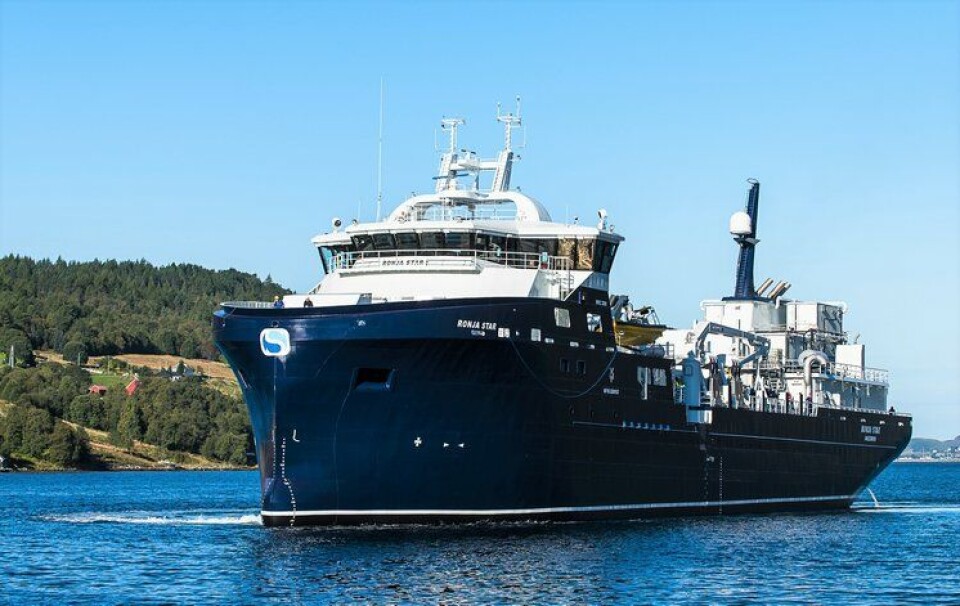
Bakkafrost Scotland used hardly any lice bath medicine last year
Salmon farmer reduced amount of active pharmaceutical ingredients to 0.03 grams per tonne
Salmon farmer Bakkafrost Scotland reduced the amount of active pharmaceutical ingredients (API) used in sea lice bath treatments to just 0.03 grams per tonne last year, compared to 0.39 g API in 2022, according to data in the Global Salmon Initiative’s 2023 Sustainability Report.
The amount of API given as in-feed treatments was 0.43 grams per tonne, 0.06 grams per tonne less than in 2022. As in 2022, Bakkafrost Scotland didn’t use hydrogen peroxide – another way to kill lice - at all.
Its non-medicinal methods of lice control are cleaner fish, freshwater treatments, anti-sea lice functional feed, thermal treatments, resistant ova, and mechanical treatments.
Sea lice counts were low throughout 2023, with the number of adult female lice per fish peaking at 0.33 in September. The sea lice limit in Scotland is two adult females for reporting and six adult females for intervention.
No antibiotics
For the third year running, Bakkafrost Scotland didn’t use antibiotics, and had no reported fish escapes.
The 12-month rolling mortality figure was 20.62%, lower than in 2022 (23.12%) and 2021 (21.71%) but significantly higher than 2020 (12.07%).
Bakkafrost Scotland, which sources its feed from parent company Bakkafrost Group’s Havsbrún feed subsidiary, had a fishmeal dependency ratio of 0.88 (2022: 1.43) and a fish oil dependency ratio of 0.51 (0.85).
Consistent metrics
Bakkafrost Scotland is the only Scottish member of the GSI, which also has seven members who farm exclusively in Chile – AquaChile, Australis Seafoods, Blumar, Salmones Camanchaca, Multi X, Salmones Austral, and Salmones Aysén – along with Tasmania farmer Huon, Norwegian company Nova Sea, and multinationals Cermaq (Norway, British Columbia, Chile) and Grieg Seafood (Norway, British Columbia, Newfoundland).
The GSI says its Sustainability Report is the only place where industry-wide sustainability is tracked against aligned and consistent metrics for companies in each of the key farming regions.
Since 2013, its members have achieved a 60% reduction in average medicinal sea lice treatments, a 75% reduction in average use of antibiotics, and continually improved efficiency in feed over more than 10 years. Almost two-thirds of GSI members’ average production is Aquaculture Stewardship Council (ASC) certified.






















































